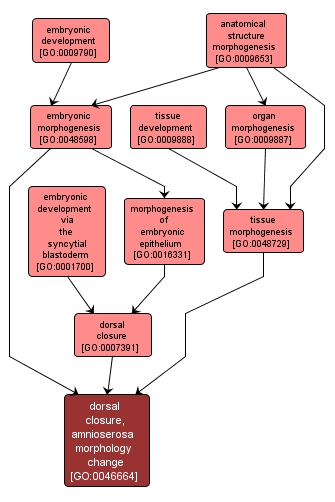GO TERM SUMMARY
|
| Name: |
dorsal closure, amnioserosa morphology change |
| Acc: |
GO:0046664 |
| Aspect: |
Biological Process |
| Desc: |
The changes that occur during dorsal closure of the shape and structure of the amnioserosa, an epithelium that occupies the dorsal side of the embryo. |
|

|
INTERACTIVE GO GRAPH
|














